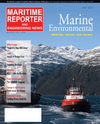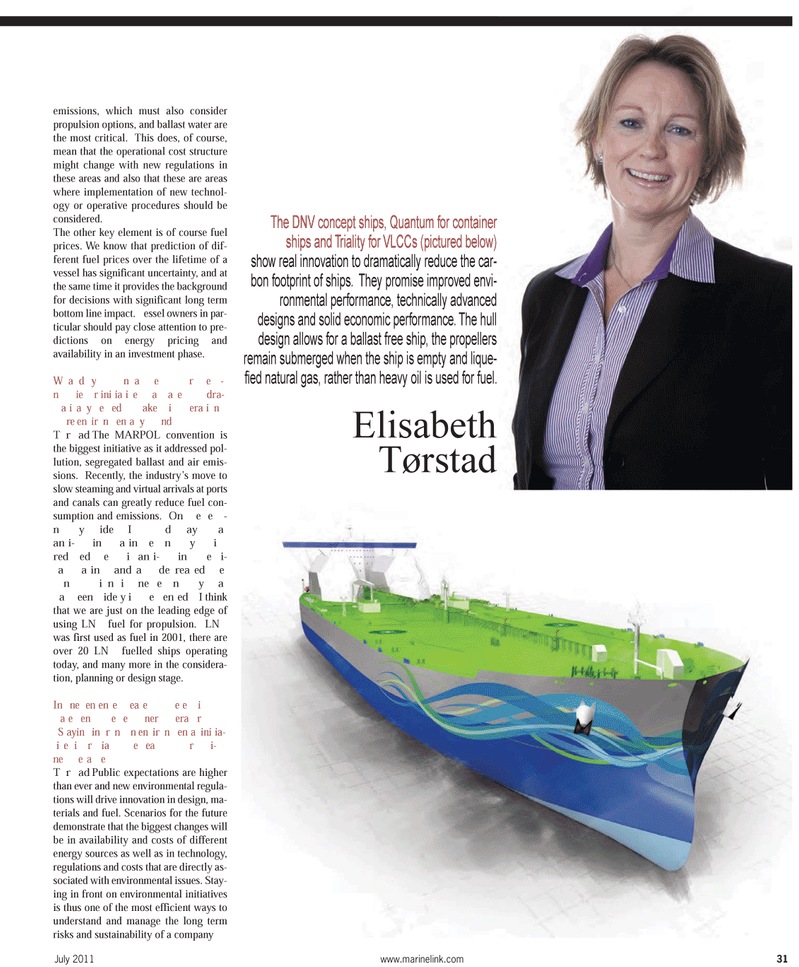
Page 31: of Maritime Reporter Magazine (July 2011)
The Green Ship Edition
Read this page in Pdf, Flash or Html5 edition of July 2011 Maritime Reporter Magazine
emissions, which must also considerpropulsion options, and ballast water are the most critical. This does, of course, mean that the operational cost structuremight change with new regulations in these areas and also that these are areaswhere implementation of new technol- ogy or operative procedures should be considered. The other key element is of course fuel prices. We know that prediction of dif- ferent fuel prices over the lifetime of a vessel has significant uncertainty, and at the same time it provides the background for decisions with significant long term bottom line impact. essel owners in par- ticular should pay close attention to pre-dictions on energy pricing and availability in an investment phase. Wa d y n a e r e- nie r iniiaie a ae dra- aiay eed ake i erain re enirnenay nd Trad The MARPOL convention is the biggest initiative as it addressed pol- lution, segregated ballast and air emis- sions. Recently, the industry?s move to slow steaming and virtual arrivals at ports and canals can greatly reduce fuel con-sumption and emissions. On e e- ny ide I d ay a ani-in ain eny i reded e i ani-in ei- a ain and a dereaed e nin i ne eny a a een idey ieened I thinkthat we are just on the leading edge ofusing LN fuel for propulsion. LN was first used as fuel in 2001, there are over 20 LN fuelled ships operating today, and many more in the considera- tion, planning or design stage. In ne enene eae ee i aeen ee nererar Sayin in rn n enirnena iniia- ie i ria e ea r i- ne eae Trad Public expectations are higher than ever and new environmental regula- tions will drive innovation in design, ma- terials and fuel. Scenarios for the futuredemonstrate that the biggest changes willbe in availability and costs of different energy sources as well as in technology, regulations and costs that are directly as- sociated with environmental issues. Stay- ing in front on environmental initiatives is thus one of the most efficient ways to understand and manage the long termrisks and sustainability of a company July 2011www.marinelink.com 31The DNV concept ships, Quantum for container ships and Triality for VLCCs (pictured below) show real innovation to dramatically reduce the car- bon footprint of ships. They promise improved envi- ronmental performance, technically advanced designs and solid economic performance. The hull design allows for a ballast free ship, the propellers remain submerged when the ship is empty and lique-fied natural gas, rather than heavy oil is used for fuel. ElisabethTørstad

 30
30

 32
32
